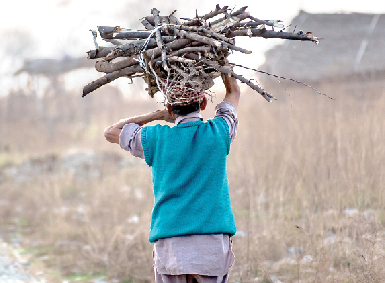Report: Drought exposes children, teens to abuse

School dropouts, child labour, Female Genital Mutilation (FGM), or child marriages are some of the vulnerabilities that children and adolescents face during drought, a new report has shown.
This is according to a new Save the Children survey conducted in Wajir, Mandera, Garissa and Turkana.
Releasing the findings of the report, Save the Children Child Protection and Gender Technical Specialist Irene Wali said sexual and gender-based violence (SGBV), neglect and abuse, malnutrition and exposure to high risk behaviours were also identified.
“Drought has also resulted into various forms of child labour for boys, girls and
adolescents. The major form of SGBV facing girls in Wajir, Mandera and Garissa counties is FGM. This is in addition to other forms of SGBV such as defilement, sexual exploitation and abuse, sodomy, child and early marriage and teenage pregnancies,” state the report.
A total of 1,200 households were interviewed, 300 in each county. She also said the survey established that close to half of the households (44 per cent) had a child 5-17 years not attending school.
According to the report, the main reasons for dropping out of school included unaffordability of school fees, education levies, change of learning facility into an emergency residence site, child and early marriage, child labour and disability.
“The drought resulted in children being withdrawn from school as they migrated, while some were left behind under the care of extended families as their family moved away.
All these drought-related effects coupled with other factors as long distance to learning institutions, inadequacy of teachers, lack of appropriate school infrastructure, preference for and completion of Madrassa and Duksi before enrolment into formal education, and insecurity in some areas worsened access to education opportunities for most children, with children with disability being disproportionately affected,” the report states.
The survey showed that drought has also resulted into various forms of child labour for boys, girls and adolescents.
A majority of the households (63 per cent) reported engaging their children in the last seven days to work in the household plots, farms, looking after the livestock, domestic and casual work affecting their personal development including interfering with their right to education.
For boys, the main forms of child labour included livestock herding, agriculture work, uplifting baggage from vehicles, riding boda boda, hawking, matatu conductors, fetching and selling water, collecting scrap metals and casual labourers among others.
Child labour
For girls, the report states that the main forms of child labour included domestic and casual work for pay such as washing clothes, fetching water, working in shops, collecting and selling firewood or charcoal, fetching and selling water, selling tea, and herding goats and camels.
The survey showed that a majority of respondents (60 per cent) reported have either heard or were aware of FGM, least known in Turkana at 19 per cent and most prevalent in Wajir where 79 per cent of the respondents confirmed their daughters had undergone it.
“FGM and drought has exacerbated child marriage as families adopt negative economic coping strategies for survival including marrying off the girls,” the report stated.











